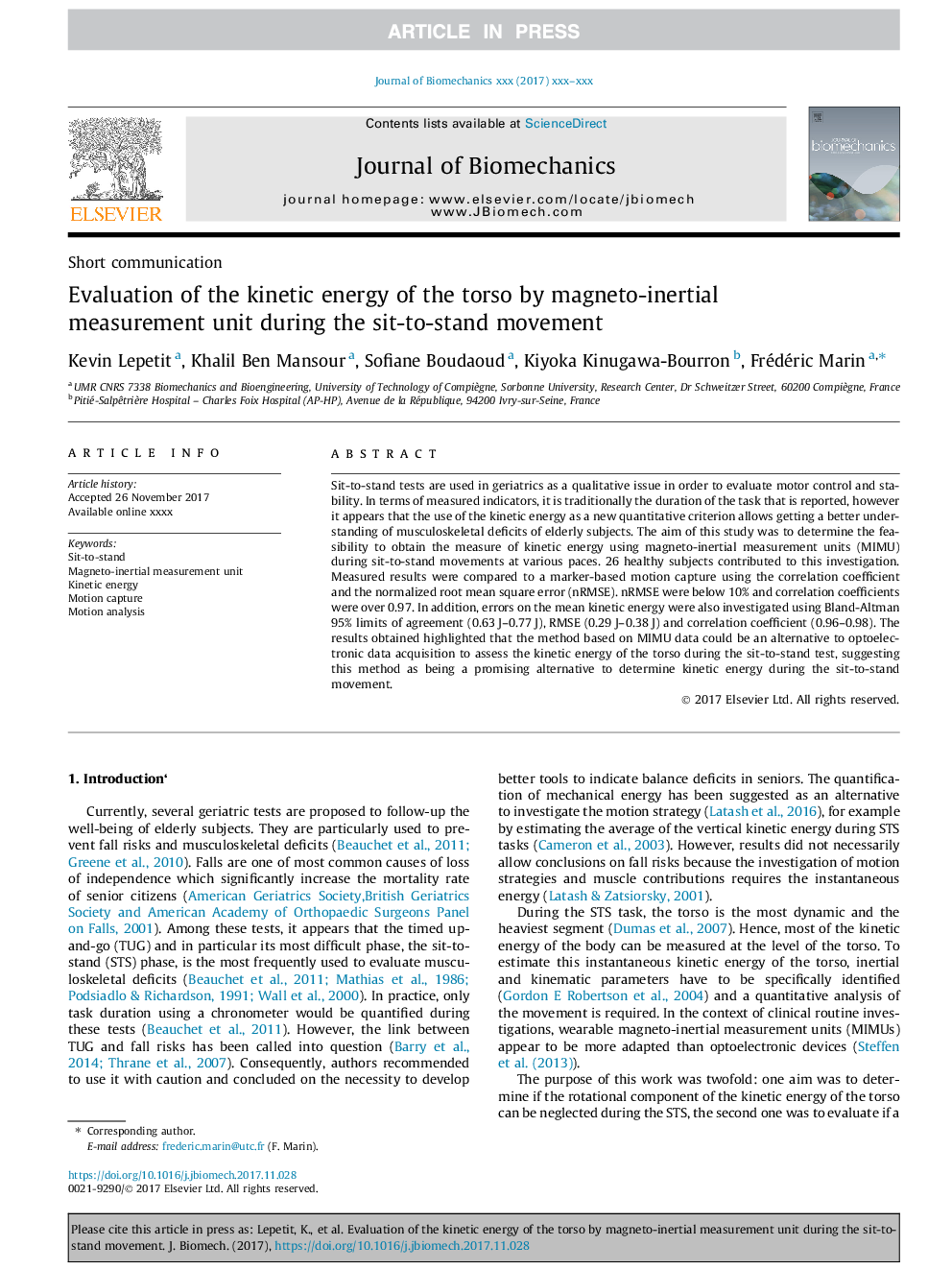| Article ID | Journal | Published Year | Pages | File Type |
|---|---|---|---|---|
| 7236807 | Journal of Biomechanics | 2018 | 5 Pages |
Abstract
Sit-to-stand tests are used in geriatrics as a qualitative issue in order to evaluate motor control and stability. In terms of measured indicators, it is traditionally the duration of the task that is reported, however it appears that the use of the kinetic energy as a new quantitative criterion allows getting a better understanding of musculoskeletal deficits of elderly subjects. The aim of this study was to determine the feasibility to obtain the measure of kinetic energy using magneto-inertial measurement units (MIMU) during sit-to-stand movements at various paces. 26 healthy subjects contributed to this investigation. Measured results were compared to a marker-based motion capture using the correlation coefficient and the normalized root mean square error (nRMSE). nRMSE were below 10% and correlation coefficients were over 0.97. In addition, errors on the mean kinetic energy were also investigated using Bland-Altman 95% limits of agreement (0.63â¯J-0.77â¯J), RMSE (0.29â¯J-0.38â¯J) and correlation coefficient (0.96-0.98). The results obtained highlighted that the method based on MIMU data could be an alternative to optoelectronic data acquisition to assess the kinetic energy of the torso during the sit-to-stand test, suggesting this method as being a promising alternative to determine kinetic energy during the sit-to-stand movement.
Related Topics
Physical Sciences and Engineering
Engineering
Biomedical Engineering
Authors
Kevin Lepetit, Khalil Ben Mansour, Sofiane Boudaoud, Kiyoka Kinugawa-Bourron, Frédéric Marin,
